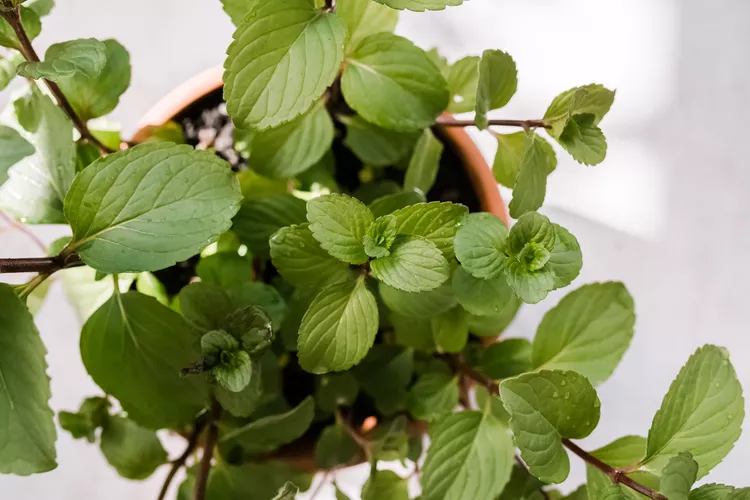
Description
Chocolate mint and regular peppermint are closely related plants (Mentha piperita). To create the ‘Chocolate’ cultivar, this hybrid is created by combining M. citrata (orange mint) with M. piperita. This hybrid plant is sterile and does not yield seeds. Although it tastes like citrata mint with an orange citrus flavor, it smells like chocolate.
The plant easily spreads by rhizomes to form an eye-catching ground cover as it reaches to a height of around two feet. Compared to other varieties of mint, the rounded, lance-shaped leaves have a deeper green color. In July, the lavender-colored flowers bloom.
Habitat
They originated in the Middle East and Europe. Although this species grows best in rich, moist soil, chocolate mint can be planted in most types of soil.
Uses
It can be added as a garnish to meat, soups, stews, sauces, and other dishes. This mint gives breads and other baked goods a unique taste. It works especially well, of course, as a garnish for sweets and as an addition to the ingredients in chocolate pastries.

Plant Care
- Light
Plants that grow chocolate mint prefer some shade. If you give them lots of water, you can grow them in direct sunlight.
- Soil
Chocolate mints grow well in almost any rich, moist soil. Sand and extreme dryness in the soil might be problematic, but if you water regularly, you can get beyond this. To maintain the soil’s good drainage, use an annual top-dressing of organic matter.
- Water
Rain or irrigation should provide 1 to 2 inches of water per week for chocolate mint, but it does not adapt well to conditions that are consistently soggy. When cultivating in a pot, make sure it drains properly and never allow the pot to dry out entirely.
- Temperature and Humidity
This plant is tolerant of any climate that falls within its hardiness zone; it is not picky. If cultivated indoors, you will require a significant amount of humidity because indoor environments are typically dry. You can add moisture by spraying the container or setting it on a plate with water and stones on it. Extreme humidity can lead to the development of fungal infections.
- Fertilizer
Due to its strong nature, chocolate mint only requires a single springtime application of balanced fertilizer.
Table





